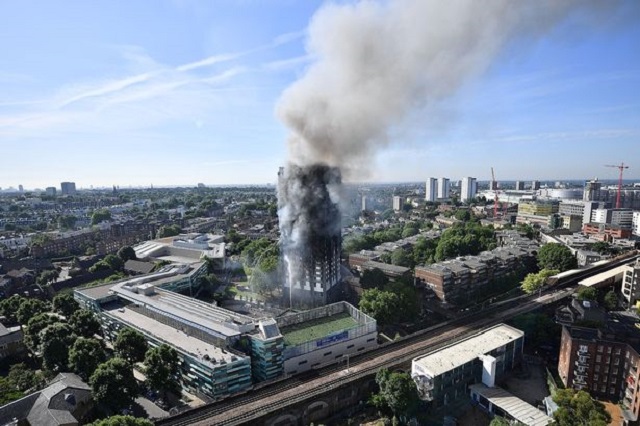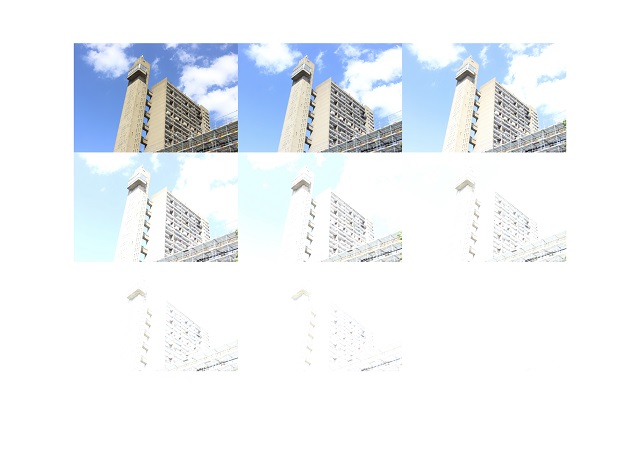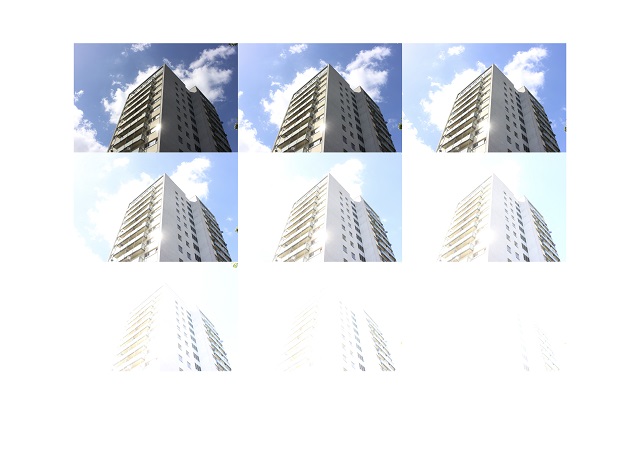After Grenfell Tower: On the decades-long war on social housing Photo Essay
New in Ceasefire, Photo Essays - Posted on Friday, June 16, 2017 21:26 - 0 Comments
By Pierre Papet
 For a few years now, I have been interested in examining the political and cultural tensions surrounding social housing in London. What I have found is that social housing has been under assault for decades, mainly from the private sector encouraged by governmental complicity and laxity. In essence, London is being cleansed of its poor.
For a few years now, I have been interested in examining the political and cultural tensions surrounding social housing in London. What I have found is that social housing has been under assault for decades, mainly from the private sector encouraged by governmental complicity and laxity. In essence, London is being cleansed of its poor.
In March 2016, whilst at Central Saint Martins, I began a project named ‘Going, Going, Gone’, aimed at raising awareness of the social housing crisis in London. I worked with the charity Defend Council Housing (DCH) who were in the middle of a big campaign, including a national march, against the Housing & Planning Bill which was going through Parliament at the time.
High rents, insecurity and rising evictions, overcrowding, waiting lists and homelessness are all some of the issues I have encountered when looking at social housing as a result of austerity measures that have been placed on people and places all around London.
According to DCH, there was a 60 per cent cut in housing investment in 2010, with ministers in 2016 announcing only a one per cent rent cut. After this week’s tragic events at Grenfell Tower, I wanted to bring attention to similar buildings in the Kensington Borough and highlight the fact this tragedy must be viewed within a much larger political and cultural context.

Trellick Tower (Pierre Papet)
Following the Grenfell Tower tragedy, I visited the area yesterday to examine the risks affecting similar buildings in the borough. I spent the day photographing social housing within the Kensington area, notably Adair Tower, Trellick Tower and Hazlewood Tower.
My hope is to bring awareness of the many other buildings within the Kensington Borough that are under threat, and which are also in danger of not meeting fire standards and regulations. Inspired by artists such as John Hilliard, the photographs aim to visibly represent the impending disappearance of these buildings as well as the integrity and rights of the lives of their inhabitants.

Adair Tower (Pierre Papet)
The tenant management company responsible for these tower blocks, KCTMO, previously suffered a fire back in October 2016, which affected Adair Tower (shown above), in north Kensington.
The fire regulation authorities delivered an enforcement notice requiring KCTMO to upgrade its fire safety standards, including the instruction to install “self-closing devices” on the front doors of flats in Adair Tower and the nearby Hazlewood Tower, built to the same design.
The external cladding, a feature of many nearby buildings such as the ones featured in this photo series, are currently being investigated as a potential factor in the fire’s rapid spread.
In 2016, Kensington & Chelsea Tenant Management Organisation (KCTMO) was paid £11m by the Royal Borough of Kensington and Chelsea to manage social housing.

Hazlewood Tower (Pierre Papet)
Questions will need to be answered, many of which as a matter of great urgency: Were corners cut in the refurbishment works, as suggested by some residents? Why were residents threatened with legal action merely for speaking out? Why was so much money – millions of pounds – devoted to “prettifying” the tower for the view of outsiders, whilst none was spent on essential safety measures, such as sprinklers, lights and alarms?
Although a public inquiry into the events was announced by the government yesterday, buildings in the nearby area will have to be extensively assessed as a matter of immediate concern. The very least we owe the Grenfell Tower fallen is to do everything to ensure a similar tragedy never occurs again.
My photographs are inspired by British conceptual photography as well as the activist works of the 1970s feminist avant garde. I took inspiration from artist John Hilliard in visibly representing the impending disappearance of these buildings as well as the integrity and rights of the lives of their inhabitants. I took identical photos of the houses whilst altering the exposure and shutter speed to slowly fade the houses out of existence. I wanted to represent the inhabitants and organisations such as the Grenfell Action Group whose voices were not heard despite their repeated warnings of the dangerous and sub-standard living conditions, including fire hazards, in the tower.
This photo-essay is the first of a two part series. In part two, I will look at Social Housing buildings that are under threat of demolition across the capital, as they come under greater pressure from the private real estate market.


Leave a Reply